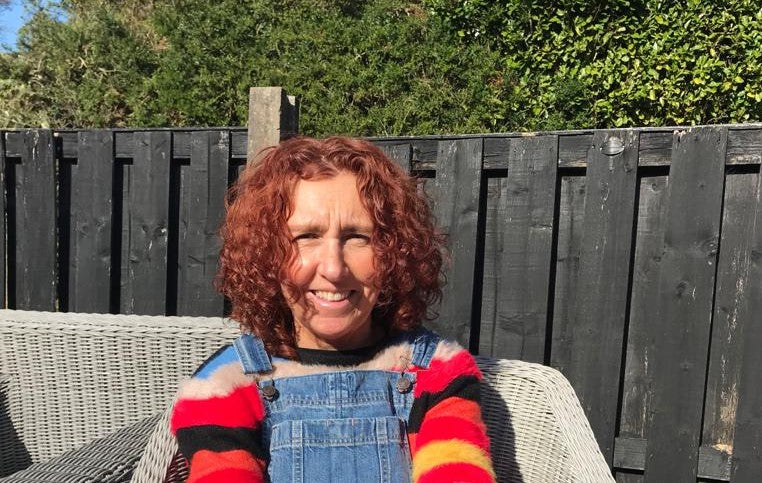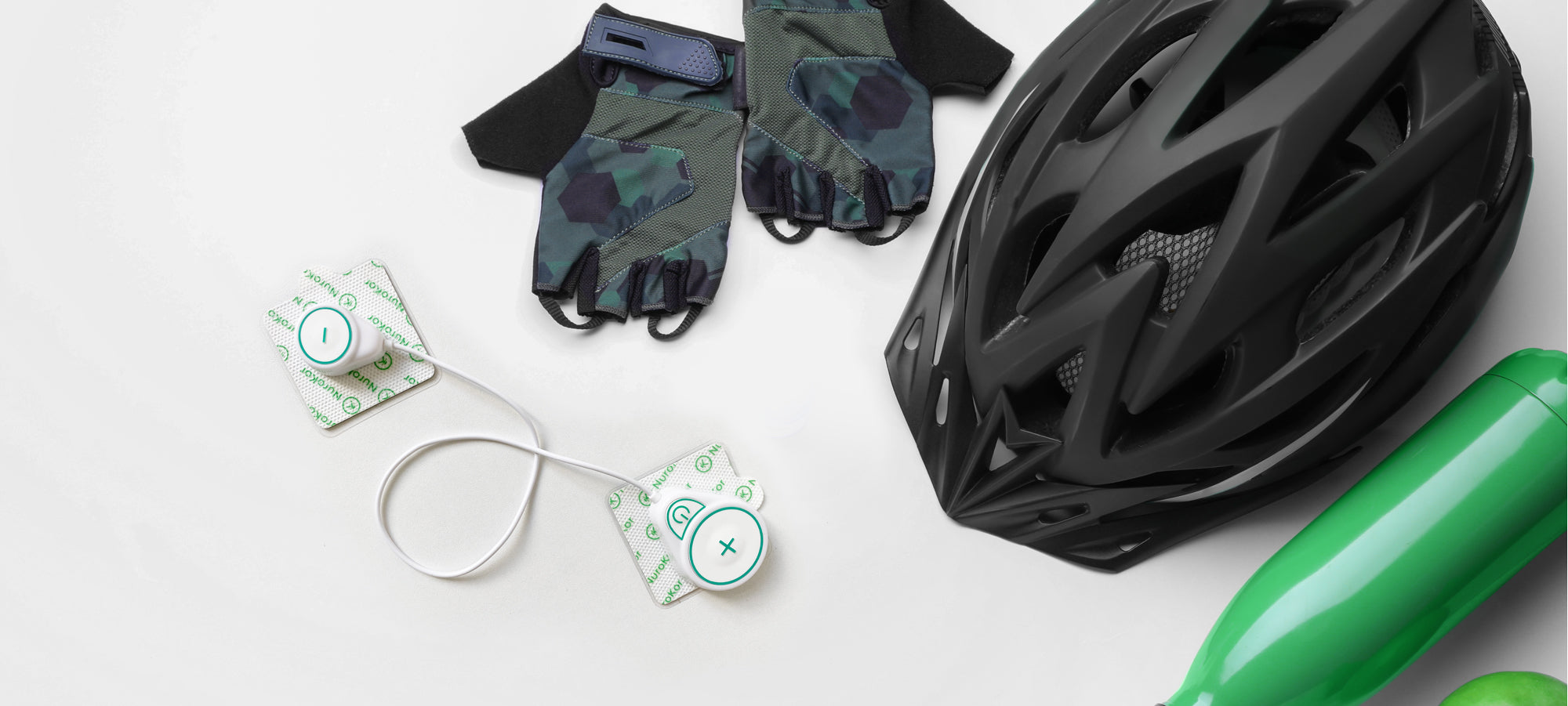Fibromyalgia can be a bit of a struggle to understand - it’s a chronic condition with a range of symptoms that for a long time has proven difficult to accurately diagnose. Many of its symptoms are shared with other conditions or are quite general, such as tiredness or pain around the body.
Despite not being a household name, fibromyalgia is actually more common than rheumatoid arthritis and can be more painful. A 2009 survey suggested that between 2.9% and 4.7% of the population suffer from the condition.
But what’s it like to live with?
Meet Zoe…

‘Long-term sufferer’ is a bit of an understatement when describing Zoe. We spoke with her about dealing with fibromyalgia and her NuroKor Lifetech journey.
Zoe… How long have you suffered from Fibromyalgia?
28 years!
Are you aware of how the problem first started?
After much research, it was explained that my fibromyalgia could’ve been caused by shock, after a traumatic labour with my second son.
How did fibromyalgia impact your life, and what did you do to combat it?
For quite a few years, I was in dreadful pain. From taking a lot of prescribed medication, I have managed to wean myself off of strong medication over the past 12 years. I now take one co-codamol and one paracetamol, twice a day. If my back is particularly painful (where I’m in pain the most) I’ll up this to three times.
It’s worth mentioning I also see a remedial massage therapist. During lockdown, I wasn’t able to have any sessions and could really feel the difference once again.
So, how did you learn about NuroKor Lifetech?
A friend bought me the mibody for Christmas. I use it daily on different pressure points around my upper and lower back. She also bought me the KorGlov which, as a full-time cleaner, also alleviates the pain I suffer with as I use my hands all the time.
What would you say to others considering using NuroKor Lifetech technology?
This little device is wonderful! It’s also easy to use, and most importantly, comfortable. It has been a lifesaver, and I would recommend it to anyone who suffers from any form of pain.

We’ve heard about Zoe’s experiences, but what else do we know about fibromyalgia?
What are fibromyalgia’s symptoms, exactly?
There are two main symptoms: pain and fatigue.
The pain can manifest throughout the body and vary in intensity. Sometimes it’s a low ache, and sometimes a powerful, burning sensation. Frustratingly, it’s not uncommon for the pain to come and go, although it is often worst in the parts of the body that are used the most.
Strangely, it can even be painful just to touch things. Kirsty Young, the television and radio presenter, recently talked about her experience of fibromyalgia. She described how even just touching the side of the sofa with her forearm ‘would bring tears to your eyes’.
Fatigue from fibromyalgia is just as variable. Sometimes it’s only mild tiredness, but then it’s possible to suddenly feel completely drained and exhausted. This isn’t helped by the fact that the condition seriously affects sleep - many patients are unable to properly rest, which leads to disorientation and even less energy.
Added to this, there’s a range of symptoms that could be caused by many other conditions, all of which makes diagnosis a challenge. These include headaches, clumsiness and dizziness, irritable bowel, and more.

What causes fibromyalgia?
No one really knows. Some research suggests that people with fibromyalgia have not enough serotonin and too much of something called neurotransmitter substance P. These are both part of how pain signals reach our brain.
Fibromyalgia Action UK says that this leads to mistakes in how the brain processes information and that where some people might feel only discomfort or stiffness, fibromyalgia patients feel pain instead.
As in Zoe’s case, physically traumatic events seem to be one potential cause.
Fibromyalgia treatments
Unfortunately, we can only treat the symptoms at the moment and not the cause. As we heard from Zoe, powerful painkillers are a common choice to manage the pain. Some degree of exercise is also helpful as underused muscles are at risk of being more painful. That said, every individual needs to determine what will work best for them.
How bioelectrical therapy can help fibromyalgia
Let’s hear from another person, Jayne, who has used NuroKor Lifetech’s technology to help with their fibromyalgia.

Jayne had actually been signed off from work when we spoke to her, so it was great to hear her positive results.
Zoe and Jayne both discussed the mibody device, which uses two forms of electrotherapy - peripheral nerve stimulation (PNS) and neuromuscular stimulation (NMS). These both have useful benefits for the symptoms of fibromyalgia.
PNS influences the pain signals that are sent to the brain so that you don’t feel pain as intensely. You can use NMS to support muscles during exercise and afterwards to optimise their recovery.
If you’d like to read about them in more detail, have a look at our webpage about our signature KorOS technology.
However, we also offer microcurrent stimulation through our mitouch device. An open study at the Bradley Memorial Hospital in Connecticut, USA, looked at the effects of microcurrent stimulation on fibromyalgia.
45 people with an age range of 25-70 took part. The trial participants had microcurrent stimulation applied for a total of four weeks. Data and results were then recorded for another six months.
51% of people noted a significant decrease in their pain, with 100% of participants recommending the technology. It’s vital to note there was not one negative rating in terms of the effectiveness of microcurrent, or any increase in patient pain.
The future of fibromyalgia treatment

Until fibromyalgia is better understood, existing drug and exercise treatment options will likely continue as the most commonly prescribed method.
But, if the Connecticut case study taught us one thing, it is that people are positive about treatment without the side-effects of conventional drug-based medication. All the participants of the trial were supportive of the non-invasive nature of the therapy (the electrotherapy is given by putting pads on the skin). Better yet, zero short- or long-term side effects were reported.
We’ve seen with Zoe and Jayne how NuroKor Lifetech technology can help reduce the use of painkillers, and we believe that electrotherapy offers an effective addition to people’s health routines when it comes to managing pain and improving quality of life.
Our thanks to Zoe and Jayne for talking to us about their experiences, and to all the other people who have shared their NuroKor Lifetech experience with us.
Let us know how you use our technology by contacting us
And if you would like to read more about how NuroKor Lifetech can help with chronic pain like sciatica or frozen shoulder, have a look at our website.
To hear more about what it’s like to live with fibromyalgia, read what Emily Canwood had to say on Fibromyalgia Awareness UK
For more information on NuroKor Lifetech, check out our range of systems



